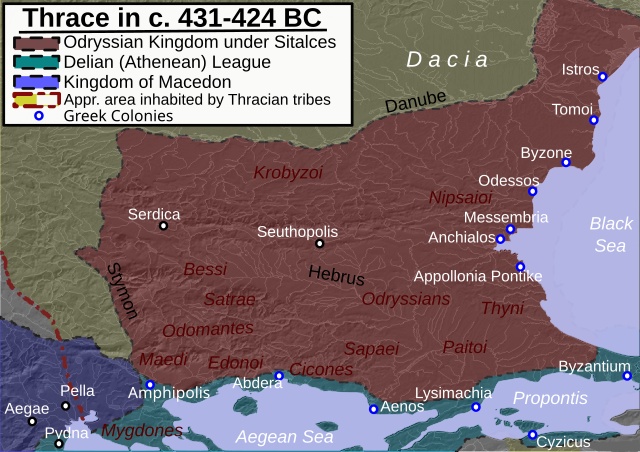Top Qs
Timeline
Chat
Perspective
Thracian treasure
Aspect of Thracian archaeology From Wikipedia, the free encyclopedia
Remove ads
The Thracians (Bulgarian: Траки, Ancient Greek: Θρᾷκες, Latin: Thraci) were a group of Indo-European tribes inhabiting a large area in Central and Southeastern Europe, centred in modern Bulgaria.[2] They were bordered by the Scythians to the north, the Celts and the Illyrians to the west, the Greeks to the south, and the Black Sea to the east.

The Thracians were skillful craftsmen. They made beautifully ornate golden and silver objects such as various kinds of vessels, rhytons, facial masks, pectorals, jewelry, weapons, etc. These show strong, and increasing, influence from the neighbouring cultures, especially the Greeks. They used to bury rich hoards of precious objects both to hide them in times of enemy invasions and unrest as well as for ritual purposes. To date, more than 80 Thracian treasures have been excavated in Bulgaria, the cradle of the Thracian civilization. Refer to the map which explicitly shows the territory of present-day Bulgaria.
Remove ads
Thracian treasure hoards
Thracian treasures
- Vazovo Thracian Pegasus
- Kralevo Treasure
- Letnitsa treasure
- Sinemorets Gold figurines
- Yakimovo Thracian Treasure
- Ravnogor Thracian Treasure
- Mogilanska Mogila Funeral Offerings
- Golden mask of Teres I, the first ruler of the Odrysian kingdom
- Bronze Head of Seuthes III found in Golyamata Kosmatka
- King Cotys I's Borovo Treasure
- Odrysian Wreath of Cersobleptes, Zlatinica-Malomirovo
- A thracian golden necklace found in Arabadjiiska Mogila
- Thracian helmet found in Pletena
- Golden treasure found at the Great Sveshtari Mound
Remove ads
See also
References
Further reading
External links
Wikiwand - on
Seamless Wikipedia browsing. On steroids.
Remove ads


















